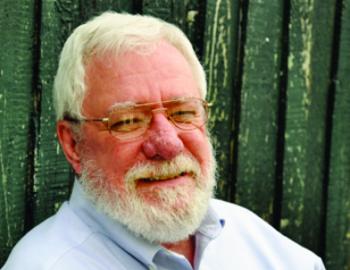
The Italian with an Indian heart
Jim Bradshaw
jimbradshaw4321@gmail.com
Iron Eyes Cody is probably one of the best-known Native American actors to appear on the silver screen. He is credited as having appeared in more than 200 Hollywood films in a career that spanned more than 70 years. In the 1970s he became an iconic figure as the “crying chief” in a Keep America Beautiful public service campaign.
That’s why he preferred that it wasn’t widely known that he was actually a Sicilian from lower Vermilion Parish.
He was born Espera Oscar de Corti on April 3, 1904, in Kaplan, the second son of Antonio de Corti and his wife, Francesca Salpietra, immigrants from Sicily. He was baptized at the Holy Rosary Catholic Church in Kaplan. He had two brothers, Joe and Frank, and a sister Victoria. His parents ran a little grocery store in Gueydan, where he grew up.
His father, Tony, left the family to work in the Texas oil refineries when the boys were young and they joined him when they were teenagers. That’s when they shortened their last name simply to Corti, as their father had done. The brothers changed it again, to Cody, when they went to Hollywood and began looking for work in the movies.
Joe and Frank didn’t stay. They got some work as extras, but moved on to other endeavors. But Oscar, the man who became Iron Eyes, found his niche in the Westerns that the Hollywood studios were cranking out at the time. He first appeared in bit parts in silent classics such as “The Covered Wagon,” “The Iron Horse,” and “The Road to Yesterday.”
When the “talkies” came into fashion, he had small roles in “The Big Trail,” the 1930 movie in which John Wayne landed his first leading role, and “The Scarlet Letter” (1934) that starred Colleen Moore, playing a Native American in each instance. After that, he played Indians exclusively in movie after movie. He also toured with Western shows and with the Ringling Brothers & Barnum and Bailey Circus.
In 1953, he appeared twice as Chief Big Cloud in the TV series, “The Cisco Kid,” and after that regularly landed parts in other television shows.
Even so, he is almost surely best remembered for the 60-second “crying Indian” spot that debuted on Earth Day 1971 and ran until 1983. In it he portrays a Native American who sheds a single tear at the sight of litter being dropped on the road.
It’s not clear just when he began to claim a Cherokee-Cree ancestry – early on he said he was the son of a rodeo performer with Buffalo Bill Cody’s Wild West Show.
His improvisation may have been inspired by his 1936 marriage to Bertha Parker. She was the daughter of Dr. Arthur C. Parker, Seneca Indian and famous anthropologist and founder of National Indian Day. Her great-great-great uncle was Ely S. Parker, the first Indian to become Commissioner of Indian Affairs. They adopted two children of Native American ancestry and he began to immerse himself in Indian ways.
Whenever he started it, he claimed Indian heritage until the end, although it’s not clear which of several versions he settled on – or if he ever did pick one story and stick to it.
His sister confirmed his Sicilian heritage, but said that even as a young kid he liked to dress in Indian garb and liked to pretend that he was one. Actor that he was, the Hollywood press seemed to accept whatever he said, once he established himself.
When he died on Jan. 4, 1999, at the age of 94, The Los Angeles Times obituary claimed that he was originally called “Little Eagle” and was born in Oklahoma, where he “received his first taste of movie-making as a child when a Paramount Pictures crew used his family’s farm for location shooting in 1919.” The obituary said his father was Thomas Long Plume Cody, who “worked as a technical advisor on many early westerns.”
Another story claimed that Iron Eyes was an expert Indian dancer at an early age, won many prizes and trophies, and was commanded to dance before the king and queen of England (who to the best of my knowledge never made it to Gueydan, or even Port Arthur, or even Hollywood).
It is true that he became an expert on the cultures of the Indians of the American West and that he was a talented photographer who documented many of the Indian ways and traditions, some of which have disappeared or are disappearing.
And it is true that he always depicted “noble” Indians and their often futile causes.
A tribute made after his death is also true: “Regardless of whether he was a Native American, or an Italian American, he generously and enthusiastically shared the Indian culture with a curious and wide-eyed audience, and in so doing, assured that he would, forever, be remembered, fondly, as one of the prime proponents and teachers of the Native American people.”
Which is something you might not expect to be said about a kid reared in Kaplan, Gueydan, and Port Arthur.
You can contact Jim Bradshaw at jimbradshaw4321@gmail.com or P.O. Box 1121, Washington LA 70589.
- Log in to post comments
